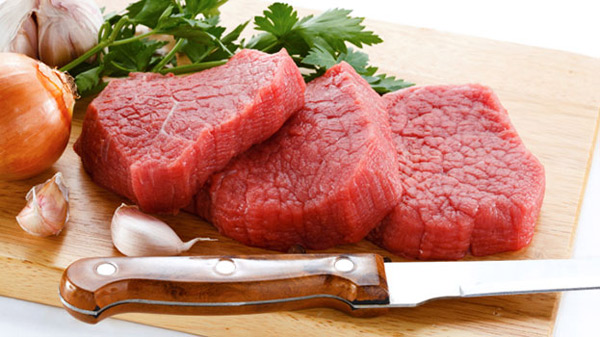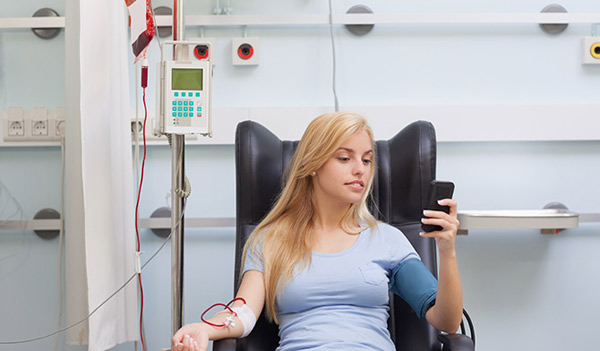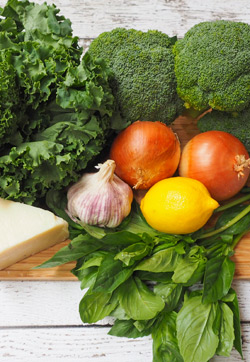|
|
Anemia : Still a Problem in 21st Century

Iron-deficiency
anemia is the most widespread nutrient deficiency in the
world, affecting an estimated 2 billion people worldwide. Between 40 and 50 % of
children under the age of 5 in the developing countries are iron deficient and
iron deficiency accounts upto 20% of all maternal deaths. It also impairs
immunity and reduces the physical and mental capacities of people of all ages.
Women, in general, have smaller stores of iron than men and have increased loss
through menstruation, placing them at higher risk for anemia than men.
In short, iron deficiency is a major public health problem world wide with
enormous social and economic costs. Rice fortified with iron was created through
the introduction of proteins from the kidney beans Phaseolus vulgaris by the
same researchers of Swiss Federal Institute of Technology (Lucca et al, 2000).
It is reported that the iron content increased two fold in the modified crop,
currently under testing stage. Japanese scientists have also succeeded in
enriching the rice grain with iron. The International Rice Research Institute (IRRI)
has developed rice breeding lines high in iron and zinc using traditional plant
breeding techniques. This rice is currently being tested by Novitiates at a
convent in the Philippines to see how well the nutrients are absorbed in the
human body.
GUIDELINES TO PREVENT & MANAGE ANEMIA
-
EAT FRESH FRUIT OR DRINK JUICE EVERYDAY
The ideal is to have a small glass of juice or a fruit shake before or after
every meal, as this will help the absorption of iron by the body. Freshly
squeezed fruit and vegetable juices contain large amounts of vitamin C and
other natural nutrients, but some carton juices can also have a high vitamin
C content: cranberry juice has one of the highest.
If you feel that citrus fruits are a little acid, have another fruit, such
as strawberries, after your meal as a dessert.
Keep your vitamin C topped up by including some dark green leafy vegetables
with each of your main meals. This could be a soup, a salad, or perhaps
steamed broccoli tossed in a light olive oil with freshly chopped root
ginger.

-
EAT ONE OF THE RICH SOURCES OF IRON TWO OR THREE TIMES A WEEK
If you eat meat this could be either lean red meat, game or offal such as
liver, kidney, oxtail.
Remember that the body absorbs 20-40% of the iron available in meat sources,
but only 5-20% of the iron from vegetable sources and eggs. If you eat a
mixed diet including fruit, vegetables, meat and fish you are thought to
absorb approximately 15-20% of the iron in the food.
-
EAT PLENTY OF NON-HAEM SOURCES OF IRON MOST DAYS
This means eggs, green leafy vegetables such as spinach, Savoy cabbage,
curly kale, watercress, broccoli, baked beans Soya- beans and other pulses,
black treacle, nuts an dried fruits (especially apricots). Vegetarians and
vegans, who eat very few or no animal products, should include a rich source
of non-haem iron everyday.
It is especially important for vegetarians and vegans to have a glass of
freshly squeezed fruit juice with each meal, as you really need the vitamin
C to help your body absorb the iron. Some vegetarians may need to take an
iron supplement if they cannot get enough iron from the diet.
-
AVOID HAVING EXCESSIVE AMOUNTS OF FOODS AND DRINKS THAT INHIBIT IRON
ABSORPTION
Coffee, tea and cola-based drinks will prevent the body from
absorbing iron effectively because they contain tannins and
caffeine. You should keep your tea and coffee intake down to a
maximum of two to three cups a day and allow at least one hour
between drinking tea or coffee before or after a meal, to give
your gut a chance to absorb the iron from the food. Anemic
women should make a real effort to cut out the excessive,
needless consumption of these drinks; it is far better to make a
really good cup of coffee or tea and enjoy it at a suitable time
of day.
Remember that chocolate, although it contains iron, also
contains substances that prevent efficient iron absorption, so
don't over-indulge, even though you may feel as if you need an
energy boost; chocolate is not the answer. Choose a zingy piece
of fresh citrus fruit or a glass of mango juice instead.
|
Points to remember
when planning an iron rich diet: |
-
Consume green leafy vegetables, cereals like
wheat, ragi, jowar, bajra, pulses especially
sprouted pulses and meat products, which are
rich in iron.
-
Do not consume tea and tamarind with iron
rich foods as they inhibit the absorption of
iron.
-
Consume foods rich in vitamin C such as lime
juice, guava, amla, oranges, etc as they enhance
the absorption of consumed iron from iron rich
foods.
-
Cook foods in iron vessels as this will
enhance the iron content in food.
-
Consume jaggery instead of sugar as the iron
content in jaggery is higher than in sugar.
-
Increase consumption of iron rich foods
during pregnancy, lactation, pre school age and
school age, as they are more prone to anemia.
-
Foods fortified with iron can be consumed,
as their iron content will be higher compared to
non-fortified foods.
|
|
While you are trying to boost your iron and vitamin C intakes, try to keep
the amount of cereal fiber such as wholegrain cereals and wholegrain bread
low. High-fiber food contain 'salts' (oxalates and phytates) that inhibit
the absorption some of the iron.
GENERAL LIFESTYLE TIPS

-
REST
Try to make sure that you have plenty of rest and don't allow yourself to
become psychological run down by putting unrealistic demands on your time.
It amazed me to hear women complain of extreme tiredness, which may be
partially attributable to anemia, but is just as likely to be the result of
being driven to do too much. If your lifestyle normally demands a lot of
physical exertion you should try to cut this down, as you will be putting
your body under too much physical stress.
-
CUT DOWN ON STRENUOUS EXERCISE
Although it is good to include some regular gentle cardiovascular exercise
such as swimming or dancing to help the body tick over. A word of
warning for those of you who are following intensive training programs. When
you are anemic you should just concentrate on the gentler exercises, rather
than the full training schedule. Remember that the major function of
hemoglobin is to carry oxygen around the body, so if you are anemic you
may find it difficult to exercise to your usual degree. Your body is below
par and therefore needs to be treated with care.
-
IRON SUPPLEMENTS
If you are unable to eat as much iron as your body requires, either because
you do not like the appropriate foods or because your iron status is a
little too low to be corrected by diet alone, you may need to take an iron
supplement.
It is generally a good idea to choose a supplement that incorporates some
vitamin C with the iron. A supplement that provides a daily 12 mg of iron
with 500-1000 mg of vitamin C should be adequate for most women, but if you
are unsure about the dose ask your doctor or dietitian.
Some iron supplements can cause a little indigestion, diarrhea or
constipation. Try to avoid taking them on an empty stomach as this can make
the problem of indigestion worse.

-
BLOOD TRANSFUSION
Amongst patients suffering from severe anemia, blood transfusion is the
treatment of choice. This method could be adopted when hemoglobin levels
have to be restored during short periods such as the third trimester of
pregnancy or prior to surgery.
-
ERYTHROPOIETIN THERAPY
Erythropoietin is a natural hormone which stimulates the production of red
blood cells by the bone marrow. Man-made versions of erythropoietin are
available. They can be given to people having chemotherapy (a treatment that
is used for some types of cancer and leukemia) to raise their level of red
blood cells back to normal and reduce feelings of fatigue.
Anemia is a global problem and unless dealt with effectively may prove to
be the most hazardous deficiency. We may end up losing many to this disease
unless we start fighting it NOW!!!
|
|
-
Green Leafy Vegetables
-
Broccoli, Spinach, curly kale, spring greens, spring onions
-
Sardines, Fortified breakfast cereals
-
Whole meal bread, Whole Grain Bread
-
Pulses like red lentils, chickpeas, baked beans, kidney
beans, Black-eyed peas
-
Cashew nuts, Sunflower seeds
-
Dried fruits like apricots, prunes and figs
-
Baked potatoes.
-
Eggs, Tofu, Brown or Converted Rice
-
Enriched Pasta, Beef, lamb, kidney, dark chicken meat, Lean
Red Meats.
|
Related Links
|
|
|
|
|









